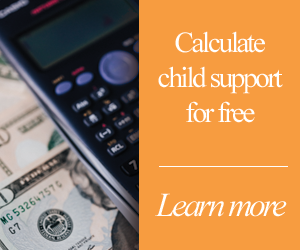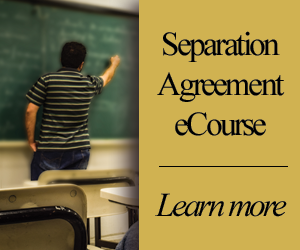“Legal custody,” “physical custody,” “joint custody,” “primary custody,” and “substantial change of circumstances”: you hear these terms all the time. You know they relate to child custody laws in North Carolina.
But what do these terms mean, and how do they apply to you and your child custody case? Let’s consider an example.
Note: You may notice that throughout this book, we interchangeably use examples involving a single child and examples with multiple children. The number of children in a family makes no difference in the application of child custody laws. Anywhere that you read an example about a single child, that principle applies equally to multiple children, and vice versa.
Child Custody Generally
Our couple, Don and Danielle, have been married for nine years and have two children, ages seven and four. Unfortunately, Don and Danielle have drifted apart over the past four years. They argue all the time, they never get along, and they cannot stand each other’s company. Don and Danielle have tried marriage counseling for the past five months, but it isn’t helping. They decide that it is best for their marriage, best for each of them individually, and best for their kids if they separate. Don moves out of the family home and into an apartment about 10 miles away from the house where Danielle continues living with the children.
Don works full time as a consultant and often travels during the workweek, sometimes within North Carolina and sometimes nationally. Danielle also works full time at a local branch of a major bank.
Both Don and Danielle are great parents. They are both very involved with their children, and each would say the same about the other.
The Best Interests of the Children
Don and Danielle both hire attorneys to represent them as they divide and distribute the marital property, determine alimony and child support, and work out a child custody arrangement. They participate in mediation to reach a settlement.
While in mediation, their goal is to negotiate a custody arrangement and schedule that serves the best interests of their children. This arrangement will not necessarily be what is best for either Don or for Danielle as individuals.
This is the prevailing legal standard—and the guidepost for both parents and the court—for all child custody cases. What is in the “best interests” of the child or children involved?
Four common child custody factors help the court decide what is in the best interests of the child:
- the child’s age,
- the stability of each parent,
- the schedule and work obligations of each parent, and
- the willingness of each parent to involve the other parent in visits with the child and events in the child’s life.
Court Order or Separation Agreement?
Don and Danielle successfully reach an out-of-court settlement in mediation. They then decide to formalize that child custody agreement and the agreed terms of child support in a consent court order.
Even though they both agreed to the custody arrangement, Don and Danielle, on the advice of their lawyers, thought it best to have their agreement incorporated into a court order. If problems do come up, an official court order can better protect each of them and can make it easier to modify the custody arrangement. With a court order, the parents can turn to the court when they have a conflict.
If the custody provisions remain in the form of a separation agreement rather than a court order, Don and Danielle wouldn’t have involved a court to help them resolve disputes. Generally, then, they would have to work together to negotiate any modifications to the custody arrangement. That process can be difficult unless both parents agree to the modification. Therefore, disputes can be harder to resolve with an agreement.
Legal Custody
Don and Danielle agree to joint legal custody.
Legal custody means the right to make major decisions involving the child. In other words, a parent who has legal custody has the right—and the responsibility—to make important decisions in the child’s life. These decisions may include the following:
- where the child will attend school,
- how the child will be disciplined,
- whether the child will have braces,
- whether the child should undergo surgery or other major medical treatment, or
- what doctor or medical facility will treat the child.
Joint Legal Custody
Don and Danielle, like most parents, have agreed to joint legal custody. “Joint” simply means that they equally share these legal decisions. This means that Don and Danielle must consult with each other on all major decisions involving the kids. They have to reach a mutual agreement on every decision; neither parent can “pull rank” with joint legal custody.
Don and Danielle know that all major decisions that come up from now until both of their kids turn 18 will need to be made together, with the best interests of the kids as the primary concern.
Physical Custody
Along with joint legal custody, Don and Danielle also agree to share physical custody. Physical custody refers to where the children will live on a day-to-day basis.
Don and Danielle agree that their kids will live with Danielle from Monday to Thursday every week. They will live with Don every other Thursday through Monday; on the off weeks, they will stay with Danielle.
Don and Danielle also agree that when Don is in town, he will have weekday visitation one afternoon and evening each week. Finally, they agree to divide visitation on all holidays in half. They both agree that this schedule is in the best interests of both of their kids.
Because Danielle has the children more than Don does, she is considered to have primary physical custody. This doesn’t mean that her time with the kids is more important than Don’s time or that Don has less of a say in how the children are raised. Both parents are actively involved and can maintain strong relationships with their kids. Primary physical custody only means that due to everyone’s schedules, the children spend more time living in Danielle’s home.
The Terminology Is Not Everything
Sometimes parents involved in a custody dispute get bogged down in the unfamiliar legal terminology. Thankfully, Don and Danielle quickly learned not to focus on the labels of “joint physical custody” or “primary physical custody.”
They realized that what mattered was developing a schedule that would allow each parent adequate time with the kids, within their own work schedules and availability.
Day-to-day decisions are made by whichever parent the kids are with on that day. So, when Don has the kids, he gets to make decisions like these:
- what to feed them for meals;
- what time they go to bed;
- whether they can visit at a friend’s house;
- what clothes they wear; and
- what, if any, TV they can watch or video games they can play.
Don and Danielle recognize that they can make these day-to-day decisions independently of the other parent. For the sake of the kids, though, they agree to create an overall routine and schedule that both will follow as closely as possible.
Modification of a Custodial Arrangement
There are many reasons why a parent might need to modify a child custody arrangement. These reasons might include the following:
- one parent has to move to another home or even another area,
- a parent’s work schedule changes,
- one parent is not exercising his or her custodial periods under the current custody order or agreement,
- the child’s schedule changes,
- a child’s preference changes (in some instances),
- the child’s safety is at risk, or
- the child’s stability is at risk.
Modifying a Court Order Versus a Separation Agreement
In any situation, modifying the terms of custody requires that there be a substantial change in circumstances. To be considered substantial, such a change must affect the child’s well-being.
If a court order is in place, the court must be involved in any changes. On the other hand, when a separation agreement specifies the custody arrangement, both parents must agree to the change. Together they must rewrite that portion of their separation agreement into a new contract or amendment.
So, how does modifying a custody arrangement actually work, particularly when it involves a relocation? Let’s explore a few examples of when the parents would and would not need to modify their court order or separation agreement.
When a Custody Order Is in Place
When a custody order is in place, it is an official court order. That means that a parent must file a motion to modify the order, and a judge must allow the motion before a new custody arrangement can be made.
If One Parent Has to Relocate and Plans to Take the Children
Fast forward a few years: Don and Danielle have now been divorced for four years. Their kids are twelve and nine. The consent custody order based on their agreement from mediation is still in place. Although both Don and Danielle agree that it has been difficult at times, they have followed all the agreed terms. The children seem to be doing quite well despite the divorce.
However, now Danielle has received a promotion with her job at the bank that will require her to move halfway across the country.
The new job comes with a significant pay raise and the assurance that she will not have to travel for work. She will be moving to an area with one of the best public school districts in the country. Plus, it happens in be in the county where she grew up, and her parents and siblings live within an hour’s drive.
The existing custody order, specifying that Danielle and Don share physical custody and giving Don the opportunity to see the kids one afternoon and evening every week that he’s in town, simply won’t work anymore. And Don cannot keep the kids regularly since he travels so much for work.
Does this count as a substantial change in circumstances so that Danielle can ask the court to modify the custody order?
There Is a Substantial Change of Circumstances
Yes, this type of cross-country move does represent a substantial change of circumstances. Therefore, Danielle files a motion asking the court to modify their consent order. The judge grants Danielle’s motion and schedules a hearing. Eventually, after listening to both sides, the court modifies the consent order because there is a substantial change in circumstances affecting the children’s well-being.
Because the Relocation Would Benefit the Children
Even though Danielle will be taking the kids farther away from their father, she has shown that the move would be advantageous to the kids. She has explained the benefits for the kids: a great school district, extended family nearby, plus Danielle’s improved job. That higher income, combined with an assurance of no travel, will enable Danielle to better provide for the children, financially and otherwise.
In this example, it would be detrimental for the kids to live with Don, even though they would be staying where they have lived all of their lives. With his work schedule, Don could not ensure that he would be available every day to maintain a home for the kids. An absent parent can’t effectively look after children, help with homework, attend school and sporting events, and so on.
Living with a parent who is often absent would not benefit the children at all.
An Example of When There Is No Substantial Change of Circumstances
Now consider the same facts, but this time Danielle’s promotion only requires her to move about an hour away. The school district is no different, and no extended family lives in this new location.
Again, Danielle plans to take the children with her. Don still sometimes travels during the week and simply does not have the availability to properly and adequately spend time with the children.
Now that there will be a one-hour drive between Danielle’s new residence and Don’s residence, it will be difficult to transfer the kids every other Thursday and one afternoon and evening during the week. That schedule would subject the kids to frequent hour-long trips each way to Don’s home and then to return to Danielle’s. With traffic and their extracurricular activities, this could be tricky to manage.
Danielle again filed the motion to modify the custody order, but the judge denied it. The custody schedule must remain the same.
No Negative Impact on the Children
This time, the judge denied the motion to modify because there was no evidence that Don and Danielle’s kids would be negatively affected by moving one hour away.
Note that this time, there was no evidence that such a relocation would affect or could affect the kids’ school performance, grades, or participation in extracurricular activities.
Yes, the additional travel time will be time-consuming and expensive for each parent. But that inconvenience does not negatively affect the welfare of the kids.
Life Changes Do Not Automatically Mean a Modification Is Needed
As this example shows, every change in the lives of the parents or the children does not lead to the automatic modification of a custody order. The parents must show something more.
Specifically, a parent requesting a modification must show that the change will be advantageous to the child’s well-being. A parent trying to block a modification request can show either that the proposed change would harm the children or that it would simply have no impact.
When a Separation Agreement Is in Place
As you’ve seen, parents who want or need to modify a custody order must file a motion in court. But what about parents whose custody provisions are in a separation agreement?
When a separation agreement, rather than a court order, specifies custody provisions, the parents do not have to file anything. These parents have more flexibility in how they change the agreement.
This is because the separation agreement is a contract that both parties entered voluntarily. The court was not involved in the execution of the agreement.
Returning to Don and Danielle, imagine that they had left their custody provisions in a separation agreement instead of obtaining a court order. Now how would Danielle go about modifying the terms if she has to relocate?
Modification Options
Parents with a separation agreement detailing custody have three options to modify the custodial schedule. They can:
- negotiate with the other parent for a change,
- return to mediation to try to reach another agreement, or
- file a custody action in court.
Negotiate With the Other Parent
Since both parents voluntarily entered the separation agreement, Danielle would have to obtain Don’s consent to modify the terms. She would need to start by explaining the change in her life and discussing her proposed modification with Don.
If they agreed on what the new terms would be, then either of them or a lawyer could draft an amendment to the separation agreement. The new agreement would need to be signed in front of a notary to be legally binding. At that point, it would replace the old custody provisions.
Return to Mediation
If Danielle has to move out of state and wants to take the children with her, Don is not likely to agree to that new custody arrangement.
Where a simple discussion or negotiation doesn’t work, parents can return to mediation. Engaging a third-party mediator trained in dispute resolution may help them develop a new custodial schedule. Returning to mediation would allow Don and Danielle to retain control over the custodial decisions. It would also help them avoid the cost of a court battle.
Some separation agreements require the parties to try to mediate future custodial disputes before resorting to litigation.
File a Custody Action in Court
Suppose Don and Danielle tried to negotiate the custody change on their own and failed. Then they tried mediation, only to fail again. Now Danielle, as the parent seeking the change in custody, will have to file a custody action against Don in court.
This is the last resort, after all other avenues to reach a new agreement have failed.
The court would treat Danielle’s case as a new custody action. Both parents would be required to complete the court-ordered custody mediation before they could get a court date in front of a judge.
The judge would hear all the evidence and decide on a new custody schedule that he or she believes is in the best interests of the kids. This custody schedule would then be written as a court order. The court order would override the custody terms in the separation agreement.
Hopefully, Don and Danielle’s example has explained some common terms and legal standards. Of course, everything is harder when it’s your own family that’s breaking up. Often people become overwhelmed and can’t figure out where to start. So what should you do first when faced with a major life change like a relocation? Our next chapter will help you decide.







